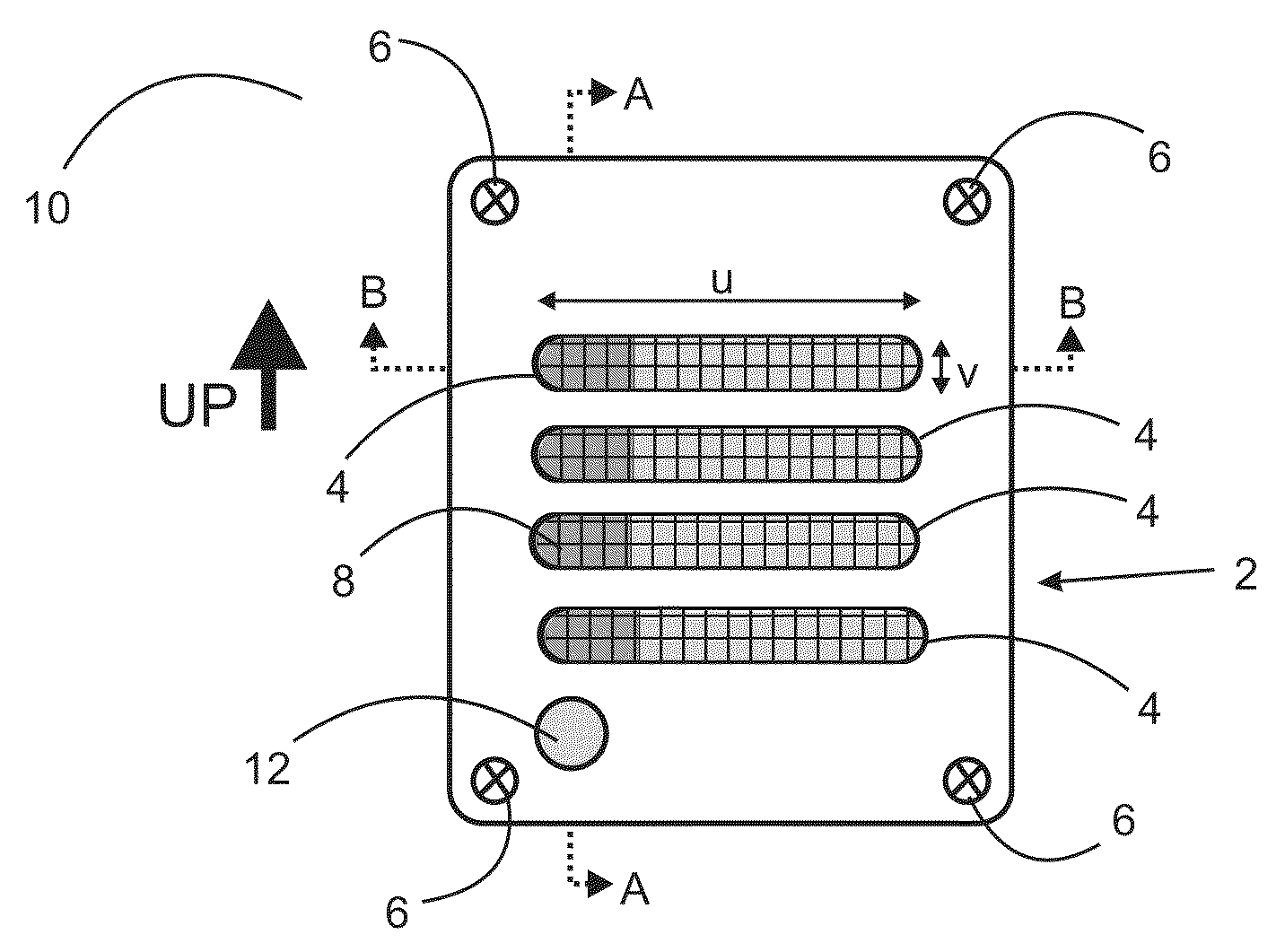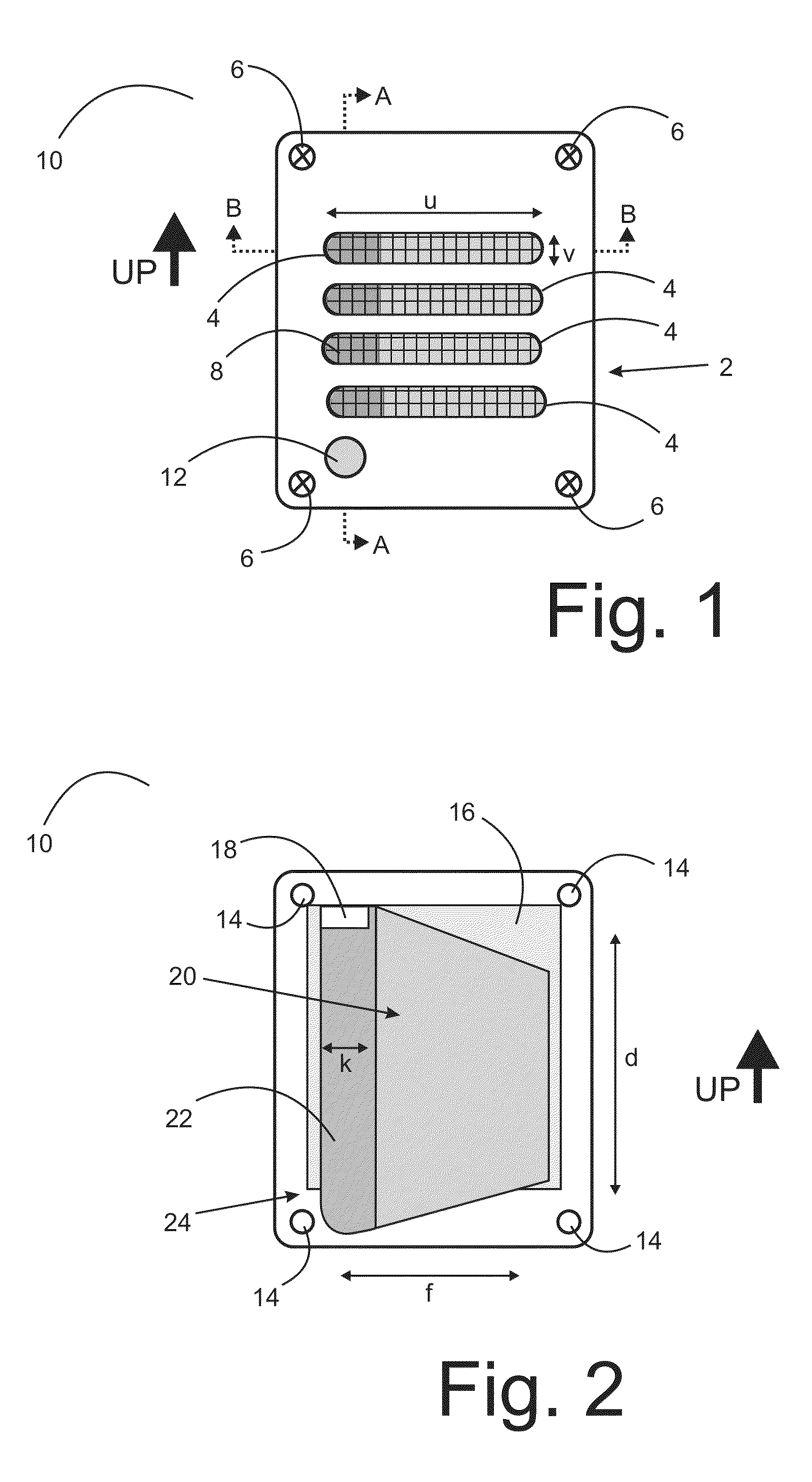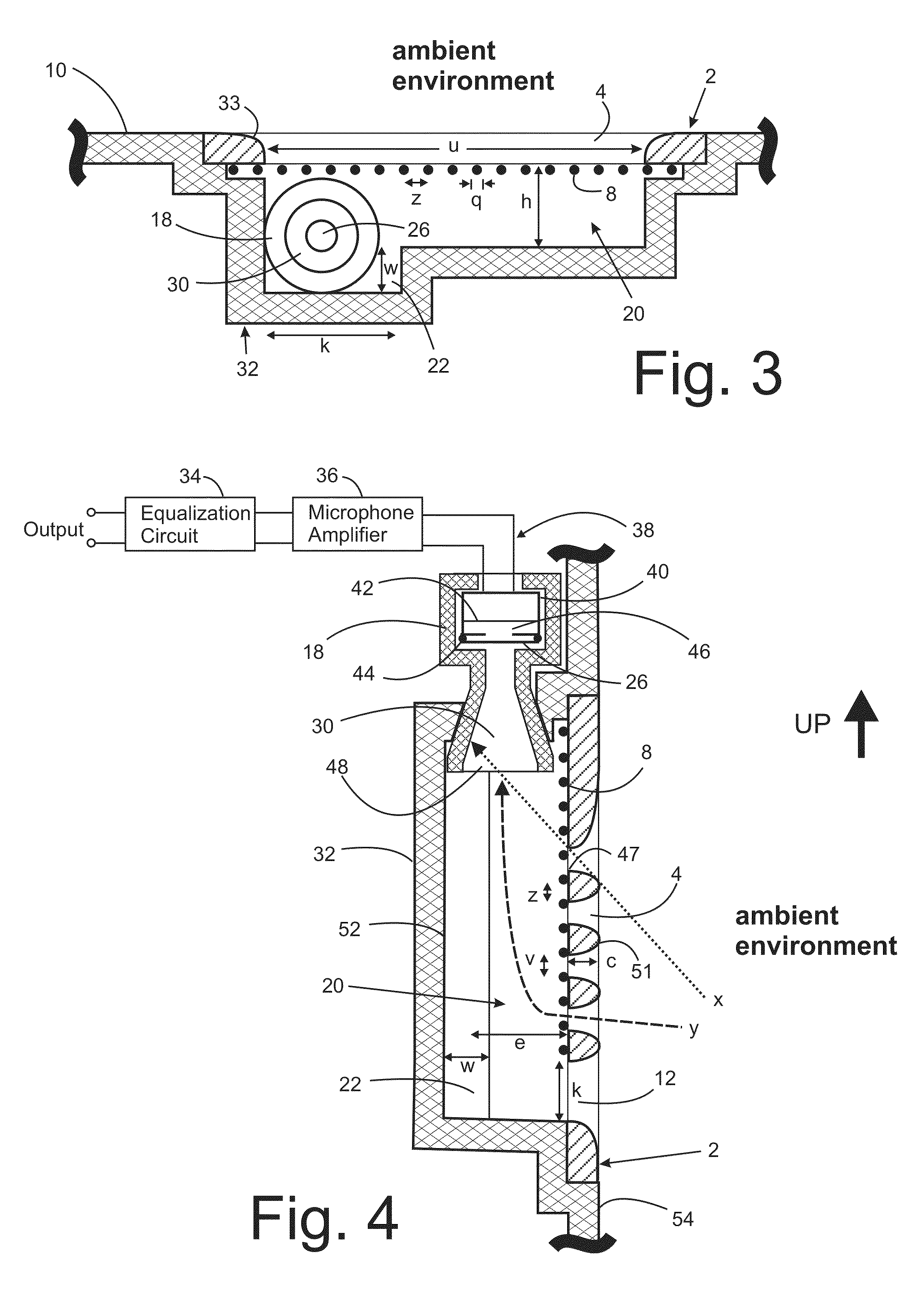Microphone environmental protection device
a technology for environmental protection and microphones, applied in the direction of transducer details, mouthpiece/microphone attachments, electrical transducers, etc., can solve the problems of high frequency sound attenuation, clogging of porous materials such as foam, and affecting the sound quality of the microphone output signal, so as to improve the signal-to-noise ratio of the output signal and improve the damage protection
- Summary
- Abstract
- Description
- Claims
- Application Information
AI Technical Summary
Benefits of technology
Problems solved by technology
Method used
Image
Examples
Embodiment Construction
[0023]An embodiment of the invention is a device for protecting microphones against environmental damage which incorporates a special perforated barrier on the outer surface of a chamber, which provides a line of sight from outside the chamber volume to inside the chamber volume. The cross-sectional area of the perforations are large enough that water can easily pass through the barrier and the barrier is self-cleaned with rain or can be cleaned deliberately with a spray bottle. An outer layer of the barrier can be made of a solid rigid material, such as plastic or metal, with slotted perforations backed by an inner layer of metal mesh material.
[0024]A drainage path can be provided for water and debris that accumulate in the chamber volume. The water drain may be a path back through the perforated barrier, or a separated dedicated drain path can be provided. This allows the device to be self-cleaning during rain and easily to clean using a spray bottle.
[0025]The barrier in this embo...
PUM
 Login to View More
Login to View More Abstract
Description
Claims
Application Information
 Login to View More
Login to View More - R&D
- Intellectual Property
- Life Sciences
- Materials
- Tech Scout
- Unparalleled Data Quality
- Higher Quality Content
- 60% Fewer Hallucinations
Browse by: Latest US Patents, China's latest patents, Technical Efficacy Thesaurus, Application Domain, Technology Topic, Popular Technical Reports.
© 2025 PatSnap. All rights reserved.Legal|Privacy policy|Modern Slavery Act Transparency Statement|Sitemap|About US| Contact US: help@patsnap.com



